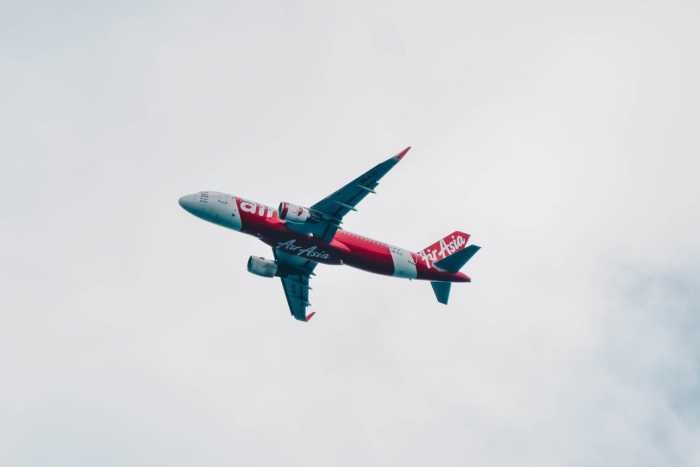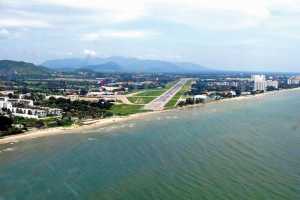
Phuket Aviation History
23rd Jul 2010

Visitors to Phuket arriving on a Thai Airways International Boeing 747 on 9 February 2009 were part of aviation history.
On that day 40 years previously in 1969 the first Boeing 747-100 'Jumbo' jet made lifted off to mark a new era in air travel.
The aircraft, two and a half times larger than any airlines existing at the time, flew for only 85 minutes from Paine airfield near Seattle, USA where Boeing's main plant was, and still is, based.
Planning for the aircraft has begun as far back as 1963 when Boeing decided they needed a new generation of aircraft for the 1970s.
It was a miracle of modern technology that forever changed air travel. The B747, now acknowledged as the world's most recognizable aircraft, ranks for four other aircraft as, arguably, the top five commercial airliners ever produced.
They are the B747, the BAe/Aerospatiale Concorde, the supersonic, Anglo-French thoroughbred that stopped service for financial reasons in 2003; the McDonnell Douglas DC-3, which itself revolutionalised travel in the 1930s as a reliable, rugged and economic aircraft; the Airbus 380 [ more about that ] and the Boeing 707, which was the first aircraft produced in a new classical configuration that set the standard for years to come.
Now if those same visitors to Phuket looked forward to changes in the aviation industry over the next 40 years what would they see?
A great deal actually.
First, to set the scene. In the last 20 years air travel grew by an average 4.8 percent each year, despite two major world recessions, terrorist acts, the Asian financial crisis in 1997, the SARS outbreak in 2003 and two Gulf wars.
It is predicted that the average over the next 20 years will be 5.0 percent a year in passenger travel and 5.8 percent in cargo. These predictions, for 2008-2027, will need to be revised in light of the current world recession, but the point is that air travel is very robust despite everything nature'and man'can throw at it.
So looking ahead how will the airline industry sustain such growth? The answer is new technology. We are now just over a year into a new generation of aircraft that will take air travel to yet another level and also about to experience new technological advances inside the cabin that will also change the flying experience forever - for some people not for the best.
Firstly the new generation aircraft. The Airbus A380 has now been operating with Singapore Airlines, its first customer, for over a year. Qantas and Emirates have also entered service with A380 across a variety of routes with more airlines to follow..
One is Thai Airways International is due to take delivery of the six A380s from 2010 onwards.
The A380 is the equivalent of the B747 in that it represents a new generation of large, twin aidle, now double decker, aircraft. The B747, remarkably, is still in use by many airlines around the world [ the 1400th Jumbo was delivered on February, 2008 ] but the A380 has a a greater seat capacity of anything up to 600 seats, depending on the configuration, is quieter and has a full double deck, compared to the B747's limited upper deck.
The other major new generation aircraft is the Boeing 787 'Dreamliner.' Now two years overdue for commercial service, the B787 is made of light, composite metal and is claimed to be 20 percent more fuel efficient. The 210-330 seat B787 is due to enter service 2010.
Japan and China are also due to introduce their own smaller regional jets. The Japanese Mitsubishi Regional Jet [MRJ-70 and MRJ-90] seat between 70 and 96 passengers, depending on the model, and will also, have composite materials.
The Chinese made ARJ21 regional jet [70-80 seats] is scheduled for its first flight this year. Already Chinese airlines have placed orders for it. The ARJ21 launches a new era for Chinese aviation.
And what about the passengers? On-board mobile phone and internet technology is not just around the corner, it is upon us.
Four Asian airlines AirAsia [ which services Phuket through Thai AirAsia] will become the first Asian carrier to introduce the on-board mobile phone service. Shenzhen Airlines, China; Kingfisher Airlines, India and Airblue of Pakistan are also due to receive the new on-board mobile phone technology this year.
Adoption of internet and email access on aircraft is also gathering pace, with over 50 percent of airlines surveyed in 2008 planning to adopt both technologies in the next two or three years. It's a similar story for text messaging, GPRS [Blackberry], laptop messaging and mobile phone calls.
So next time you arrive in Phuket by aircraft in future, think of the possibilities awaiting you of your ability to text, email or phone'heaven forbid-- your mother in law to say you are coming for the weekend.
We have come a long way since that epoch making B747 flight in 1969 but the possibilities for new innovation and technology in aviation appear endless.









